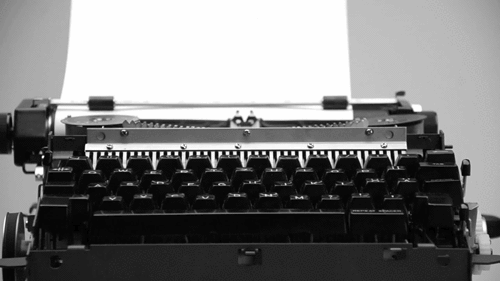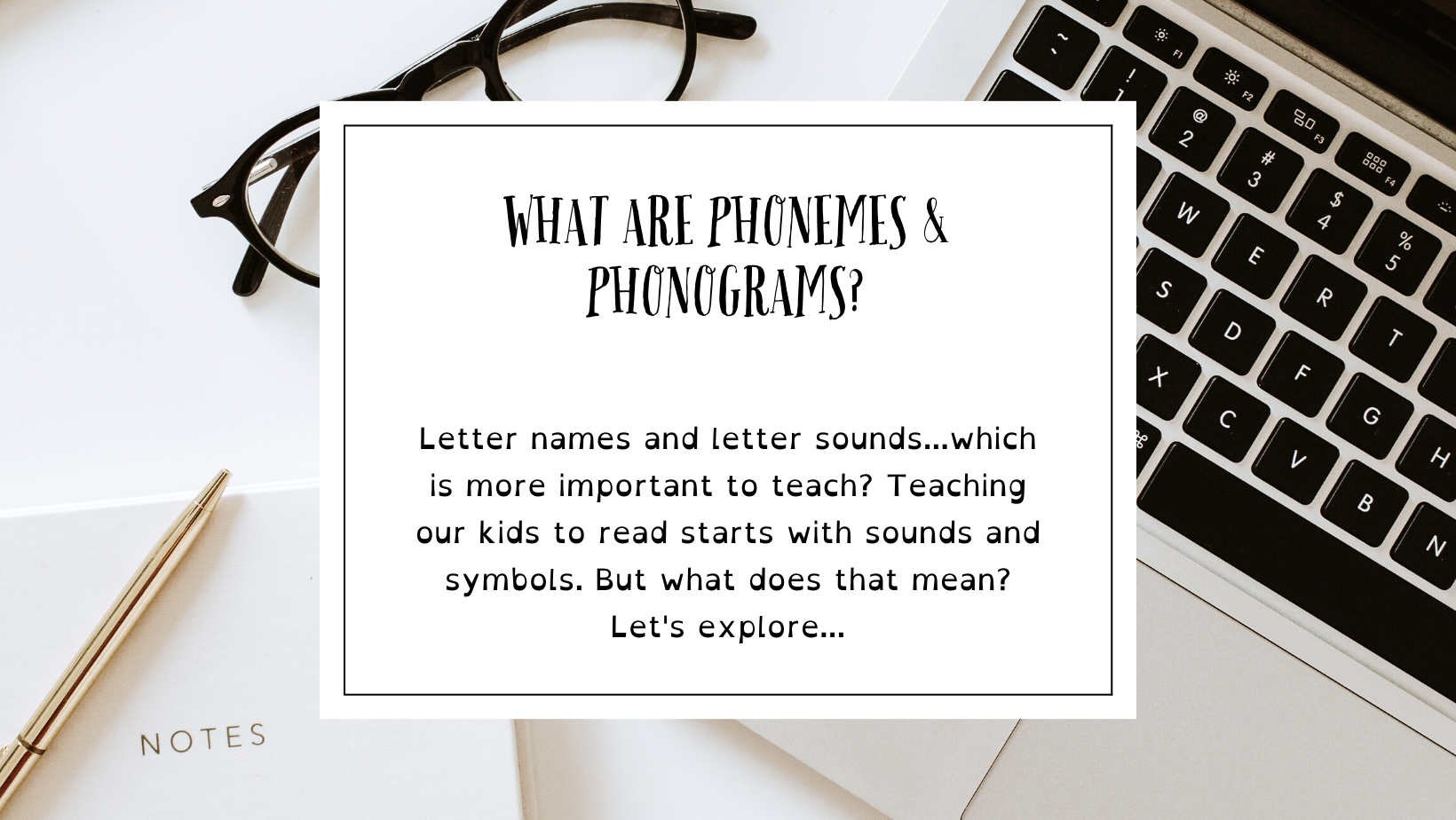Letter names and letter sounds. Which do you think is more important to teach your child? Which do you focus on teaching your child when they're a preschooler, a toddler, first start reaching for a board book? If you're like most of us, the answer is letter names. But does a child need to know the letter names or the letter sounds to read? Teaching our kids to read starts with sounds and symbols. But what does that mean? Let's explore...
What is a phoneme?
A phoneme is the smallest unit of sound in a syllable or a word. Even though there are only 26 letters, there are 44 phonemes in the English language. Phonemes are represented by phonograms (pictures of letters). We say phonograms or graphemes because they can be anywhere between 1 - 4 letters. We call them multi-letter phonograms that together make only one sound.
What the heck is a phonogram?
A phonogram is a symbol that represents one sound or phoneme. It comes from the Greek phono meaning sound and gram meaning picture. Therefore, a phonogram is literally a picture of a sound. It can also be called a grapheme but is more commonly referred to as a phonogram, which is how I will refer to them. Even though there are only 26 letters and 44 sounds, there are 75 basic phonograms, that is 75 common ways to spell the 44 sounds in the English language. A phonogram can spell more than one sound sound (for example, long and short vowels). In fact, a phonogram can spell up to 6 sounds! Teaching sounds rather than letter names helps a child read and spell faster because once they know the sounds of the phonograms, they can blend the sounds into words to read and break sounds apart in a word to spell. It all comes back to phonemic awareness.
What the heck is phonemic awareness?
Maybe you've heard the term "phonemic awareness" but have no idea what it is. I feel you because I was there too a few years ago. Not to mention that many schools gloss over phonemic awareness or just don't pay that much attention to it. But phonemic awareness is SO important; in fact, it's one of the first steps on the road to reading. Phonemic awareness is the ability to hear and manipulate sounds in spoken words. In fact, the best predictor of reading difficulty in kindergarten and first grade is the inability to break words apart (sometimes referred to as segmenting) into sounds and syllables. And that's what reading is, really. Breaking words apart into their sounds and blending them back together to read words. Phonemic awareness is reading with your eyes closed. That's because it is oral and auditory, and the focus is on the sounds in words.
If that's phonemic awareness, then what's phonics?
Phonics refers to the letter-sound relationships. It is visual and auditory. It is learning the over 75 ways how to spell the 44 phonemes in the English language. Phonemic awareness comes before learning phonics. Think of phonemic awareness as the foundation for phonics. If phonemic awareness is not mastered first, phonics does not make sense to a child.
That's a lot to take in! How can I use this knowledge to help my child at home?
Always start with sounds. (Research tells us that it's best to teach sounds and letter names at the same time, but for our purposes, the sounds are the most important thing to teach and learn.) If they're already in school or you've already taught them the 26 letter names and 26 sounds (trust me, we've all been there), take it back a step. Start teaching them that individual letters can spell multiple sounds. For example, while /s/ is the most common sound for the letter s, it can also spell /z/ like in the word "has." Start simple; start small. Instead of 26 flashcards with 26 letters that have 1 sound each, make your own phonogram cards with all of their sound-spellings and start teaching there. When there's a struggle, take a step back. Close your eyes and focus on phonemic awareness and hearing those sounds in words.
What if my child struggles with phonemic awareness?
Take it one step back to phonological awareness, which is the awareness of larger chunks in words. If phonemic awareness refers to recognizing and manipulating individual sounds, then phonological awareness refers to bigger chunks of language such as words in sentences or syllables in words. It is an umbrella term, and phonemic awareness falls under that umbrella.
How can I help my preschooler, kindergartener, or struggling reader with phonological awareness?
Phonological awareness is one of the most basic foundation skills of reading. Preschoolers can start with phonological awareness! In fact, I would argue it is more important to focus on phonological awareness than letter names, sounds, and keywords with your preschooler. Together you can count the words in sentences. (For extra multisensory fun, add a pop-it and pop each word). Say a compound word like rainbow separately. Rain. *pause* Bow. What's the word? Rainbow! For syllables, read last week's blog post on syllables here.
Before you know it, your child will no longer struggle with reading, and you’ll feel confident teaching them how to read.
Questions? Join me LIVE on Facebook on Friday at 9:00 am PST or e-mail me at aoife@thereadersdropinn.com. See you next week!


